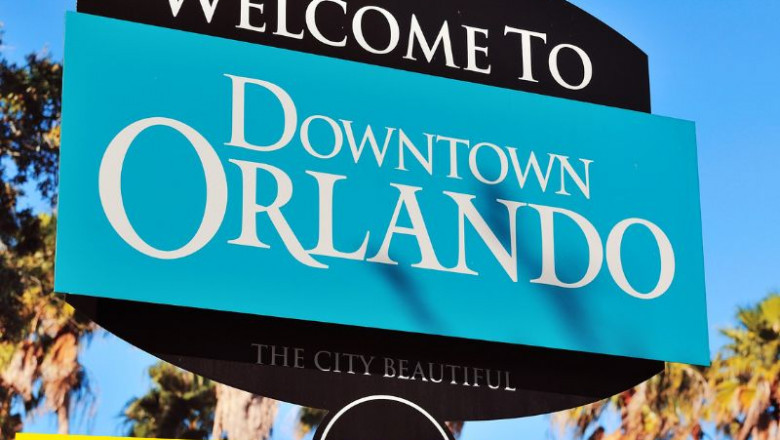views
Moving to Orlando: Essential Guide for you
Orlando, Florida—yep, the place with all the theme parks and sunshine—might already be on your radar for a vacation. But guess what? A lot of people are actually packing up and calling it home.
It’s one of the fastest-growing cities in the country, and it’s drawing in everyone from families and young professionals to retirees and digital nomads. If you're thinking about making a move to the City Beautiful, here’s the inside scoop on what to expect.
The Ups and Downs of Living in Orlando
PROS
1. No State Income Tax
Let’s start with the wallet-friendly news: Florida doesn’t take a cut of your paycheck when it comes to state income tax. That’s a big deal, especially if you’re earning a good salary or enjoying retirement income.
2. Sunshine All the Time
Orlando gets over 230 sunny days a year. Winters are short and sweet, and while summers do get toasty, it’s still a major win if you’re tired of shoveling snow.
3. More Than Just Theme Parks
Sure, Disney and Universal are big draws, but the job market here has more to offer. Healthcare, education, and even tech are growing fields, and big employers like Lockheed Martin and AdventHealth are hiring.
4. So Much To Do
Theme parks, of course—but that’s just the beginning. You’ve got golf courses, lakes for boating and fishing, cool food festivals, and a lively nightlife. It’s hard to be bored here.
5. A Melting Pot of Cultures
Orlando is incredibly diverse. People come here from all over the world, bringing with them unique food, music, and traditions. It makes the city feel fresh and vibrant.
CONS
1. It’s Hot—Really Hot
Summers in Orlando aren’t just warm, they’re sticky. Temperatures in the 90s and high humidity are the norm. And those surprise afternoon thunderstorms? They're like clockwork.
2. Storm Season Is Real
Even though Orlando’s not on the coast, hurricanes and tropical storms can still roll through between June and November. Having an emergency plan (and maybe some flood insurance) is smart.
3. Traffic Is a Pain
With all the new people moving in and the tourists crowding the roads, traffic—especially on I-4—is a daily challenge. Some days, even a short drive can feel like a road trip.
4. Tourists Everywhere
Living in a vacation hotspot means dealing with crowds. Popular areas near the parks or downtown can get jam-packed, especially during holiday seasons.
5. Schools Are Hit or Miss
Orlando’s school quality varies a lot by area. Some neighborhoods have top-rated public schools; others, not so much. Doing a bit of homework before choosing where to live is definitely worth it.
What’s the Housing Market Like?
Buying a Home
Over the years, Orlando’s real estate market has grown fast. As of 2025, the average home price is hovering around $400,000, but that really depends on where you’re looking.
- Downtown Orlando: If you love city vibes, expect to find condos and townhouses priced between $300K and $700K+.
- Lake Nona & Winter Park: These are more upscale, family-friendly areas with newer homes—usually starting around $500K.
- Altamonte Springs & Kissimmee: Great for families and budget-conscious buyers, with more affordable options.
- MetroWest & Conway: Middle-of-the-road pricing and good school options, perfect for young professionals or couples.
Renting Instead?
Totally normal to rent first while you get your bearings. Here’s what to expect:
- 1-bedroom in downtown: Around $1,700–$2,200/month
- 2-bedroom in the ‘burbs: $1,800–$2,500/month
- Luxury or resort-style pads: Think $2,500 and up
A lot of people move here and rent for a while before committing to a neighborhood—and that’s a smart move.
Getting Around Town
Let’s be real: you’re going to need a car.
Driving in Orlando
Orlando is very spread out, and while the roads are pretty good, traffic is part of life here—especially during rush hour or when a new Disney attraction opens.
- I-4 is the main highway, and while it connects you to everything, it also gets jammed up often.
- Toll roads like 408 and 417 can help you skip some of the traffic, but keep a SunPass handy for easy access.
Public Transportation? It Exists—Sort Of
- LYNX Bus System: Covers a lot of the city, but not always the most efficient.
- SunRail: Great if you’re commuting between downtown and places like Winter Park or DeBary.
- Scooters and bike shares: Handy in places like downtown or near UCF, but not something to rely on for your daily commute.
Airports
- Orlando International (MCO) is huge and well-connected. You’ll probably use this one the most.
- Orlando Sanford (SFB) is smaller and good for budget travel.
Conclusion
Moving to Orlando is kind of like jumping into an adventure—you’ve got sunshine, opportunity, and a city that’s constantly growing and changing. Sure, there are some things to get used to (like the heat and traffic), but if you can handle that, there’s a lot to love here.
Best advice? Come visit first, explore the neighborhoods, get a feel for the vibe, and see what fits your lifestyle. Once you’re settled, don’t be surprised if friends and family start planning their “visits” (aka mini vacations) to see you.





















Comments
0 comment